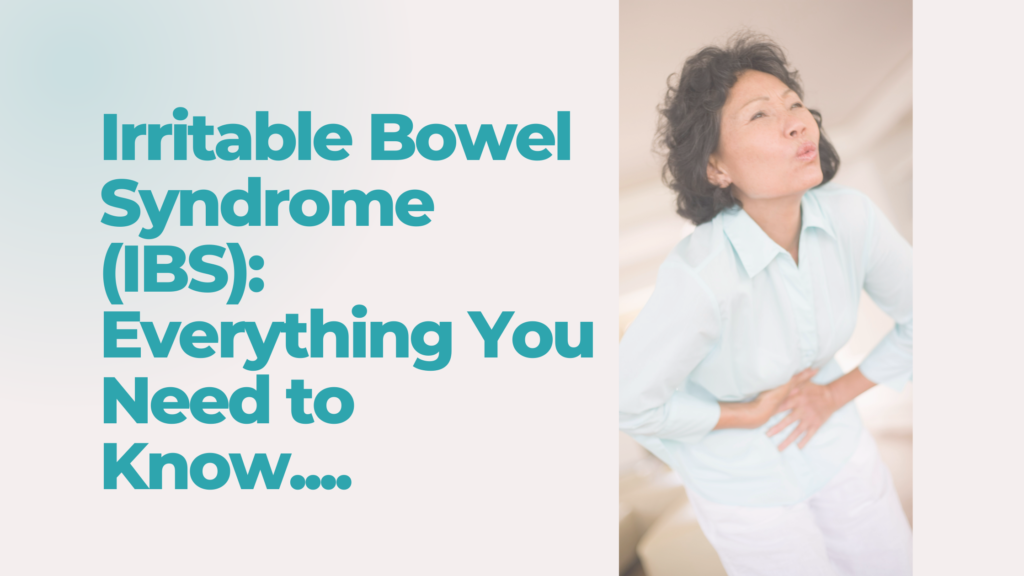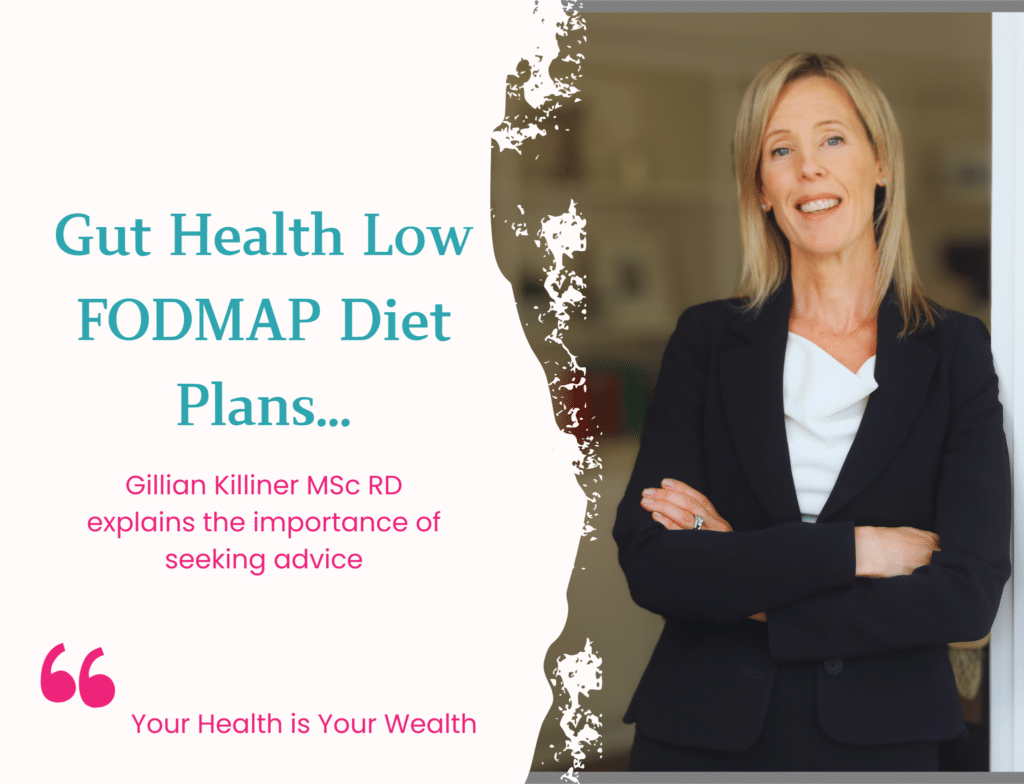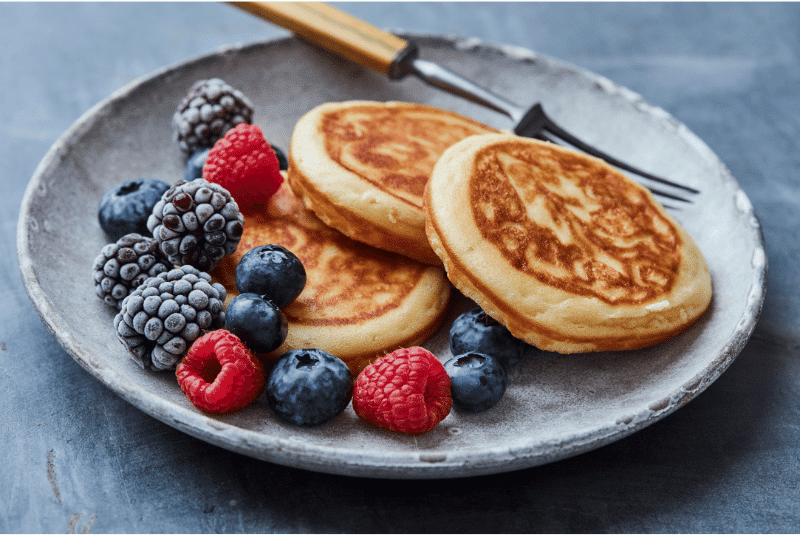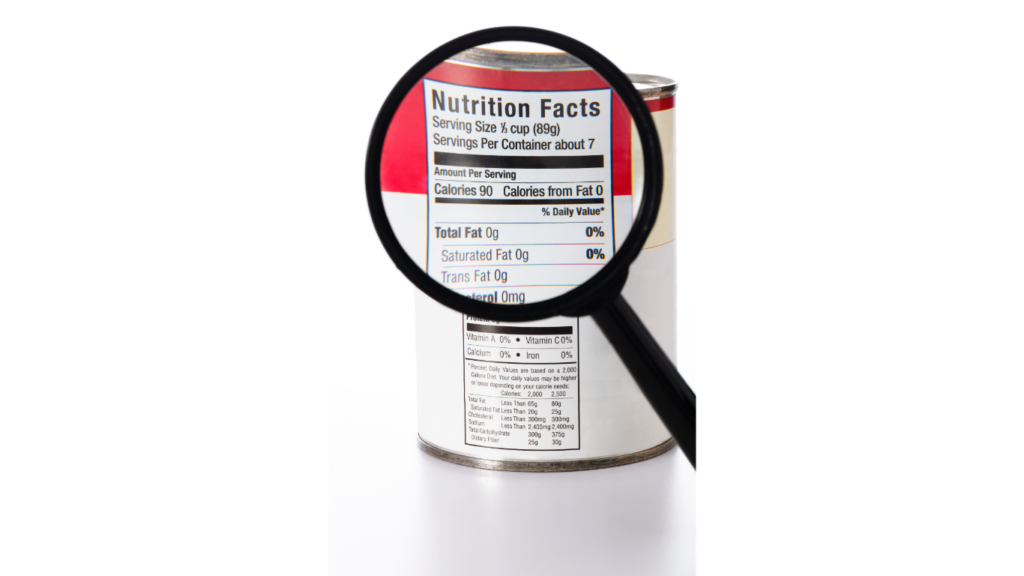Irritable Bowel Syndrome (IBS)- everything you need to know..

Struggling with bloating, cramps, or unpredictable bowels? You might be one of the millions affected by Irritable Bowel Syndrome (IBS). In this blog, expert Dietitian Gillian Killiner explains the causes, symptoms, and evidence-based strategies to manage IBS — including how personalised nutrition and lifestyle changes can help you take control of your gut health.
Low FODMAP Diet Plans – limitations for Irritable Bowel Syndrome

Relying solely on Low FODMAP meal plans from the internet may not be the panacea for all IBS sufferers
How to Improve Gut Health in the UK

Understanding Gut Health Gut health is a very common concern that Gillian Killiner, our 121 gut specialist award winning Dietitian is asked to assess by Drs, Consultants, AHPs and patients who self-refer. She treats many every day, whether it be through online consultations or face-to-face in her clinic. If you’re not familiar with the concept of gut health, don’t worry! It’s a broad topic that encompasses various aspects related to different parts of the body, in addition to the gut itself and in the next few blogs we hope to cover these areas in more detail so you can get a better understanding. Gut Bacteria The gut microbiota, also known as gastrointestinal bacteria, is a diverse community of microorganisms that reside primarily in a part of the large bowel known as the colon, which is part of the digestive tract. This community includes bacteria, viruses, fungi, and other single-celled organisms. The gut microbiota plays a crucial role in various aspects of human health, and its composition can vary among individuals. A healthy gut not only strengthens our immune system but also supports the well-being of essential organs like the heart and brain. Moreover, it positively influences mood, fostering happiness and satisfaction. We know that when the gut is not balanced health is compromised at many levels. How are we able to assess our gut bacteria? Research into gut bacteria has been conducted since the invention of the microscope around 1665. Over the past 30 years, there has been a significant leap in this field, thanks to the sequencing of small molecules of life, including DNA and eventually RNA. What is Gut Health? The term “Gut health” is the umbrella term for various health conditions including : GERD Irritable bowel syndrome Hemorrhoids Coeliac disease Gallstones Constipation Diverticulitis Gastritis Ulcers Colorectal cancer Diarrhoea Gastrointestinal infections Liver disease Pancreatitis Esophageal cancer Gastroparesis Years of research and work in practice link these conditions to our gut bacteria whether as a direct cause, preventative or used as a treatment. In addition extensive research has also been linking the vital organs like brain, heart, liver, skin to our gut bacteria and how imbalances in the gut microbiota can lead to increased intestinal permeability or “leaky gut,” allowing harmful substances to enter the systemic circulation and burdening liver function. We know the health of our skin is closely linked to our gut health due to their shared immune system involvement. Research indicates that disruptions in the balance of intestinal flora may contribute to skin conditions like acne, eczema, psoriasis, rosacea, and dermatitis. The gut-brain axis is a bidirectional communication system between the brain and the GI tract. Treating the gut can directly assist mental health and well-being. Our Gut Health Programme is adapted to suit all gut health issues and more. Excellent Gut Health Ensuring excellent gut health at every age is crucial for overall wellness. An effective digestive system also promotes efficient nutrient digestion and absorption, which subsequently enhances sleep quality. Hence, giving priority to gut health is highly recommended. × Dismiss this alert. Dietitian’s Role in Managing Digestive Disorders A dietitian plays a crucial role in managing digestive disorders by providing tailored nutritional guidance to alleviate symptoms, promote digestive health, and improve overall well-being. Our 121 Gut Health Programme has helped thousands of people not only regain control of their bowel symptoms and health but also improve their sleep, mental clarity, weight and other health issues. How does 121 Dietitian work to improve Gut Health? At 121 Dietitian we work closely with other healthcare professionals to aid in the diagnosis and treatment of digestive disorders. We perform detailed individual assessments take a deep dive into the detail in our 60-minute consultation before writing up a detailed bespoke plan, supplement and lifestyle protocol. Before attending an appointment, our patients are required to log in to our online Portal to complete our background questionnaire and Food and Symptoms Diary. This part of the programme is completely free of charge and allows one of our specialist dietitians to direct you to select the correct programme. The programme includes a 30-minute review to ensure the programme has been successful and provide further nutritional advice and guidance as part of the programme requirements. Mairead AdamsGoogle Review Read More After having COVID at the end of 2022 I suddenly developed allergies to Milk products and intolerances to other foods. My Gastroenterologist recommended I see Gillian, who put me on her low Fodmap Programme at the end of September and I am now at the Reintroduction Stage. Since commencing the Programme, my bowel movements and general health have improved dramatically. I sleep better and a number of my aches and pains have gone. After having diarrhoea for 9 months, effectively, I can now go out and about without that worry of knowing if I will be close to a toilet and if I will be able to get there on time, to constantly carrying Immodium, just in case. The peace of mind this has given me is enormous, never mind that I now feel more like a ‘normal’ person. I still have to watch what I eat, especially in relation to my milk allergy, which may take a bit longer to ‘fix’, if it can be fixed. However, the change in me is amazing and I am extremely grateful to Gillian for her time, advice and patience in getting me to this point. Thank you Gillian. How a Specialist Dietitian can fix your Gut… Specialist gastrointestinal Dietitian Gillian Killiner brings her 26 years of dietetic experience to help each patient she sees. Her deep dive is extensive – here are just some of the areas covered…. Fibre Management We guide patients on appropriate fibre intake, considering the type and amount of fibre that can aid in digestion without causing discomfort. Food Allergies and Intolerances We identify and address food allergies or intolerances that may contribute to digestive issues.Recommend suitable alternatives to replace problematic foods. Hydration We emphasise the importance of adequate
Halloween Healthy Treats: A Ghoulish Feast

Halloween Healthy Treats….Boo! Halloween is just around the corner, and it’s time to spookify your snacks without scaring away your health-conscious habits. As a dedicated dietitian and the founder of 121 Dietitian, I’m here to share some devilishly delightful and nutritious Halloween treats that will have both kids and adults howling for more. Reduce reaching for those toxic sugary sweets and hello to a spooktacular array of wholesome and delicious goodies that are easy to prepare and frightfully fun to eat. Let’s dive into the cauldron of creativity and cook up a Halloween feast that will leave your taste buds spellbound! 1. Bobbing for Apples: A Classic Halloween Tradition with a Healthy Twist A great favourite with us kids of the 70’s! Bobbing for apples. This is a timeless Halloween game that can be turned into a healthy treat. Instead of sugary treats, my mum would fill a tub with water and add fresh, crisp apples. I did the same for my kids and no doubt they will hopefully continue the tradition! Apples are packed with fibre and essential vitamins, making them perfect for a Halloween healthy game. Encourage the kids to enjoy the natural sweetness of the apples while having a ghostly good time bobbing for these fruity delights. 2. Celery Ants on a Log: A Creepy-Crawly Snack to Delight Your Guests Create a spooky sensation with celery ants on a log. Slice celery sticks into manageable pieces and fill the groove with either cream cheese, natural peanut butter or almond butter. Top it off with raisins, resembling ants crawling on a log. Celery provides a satisfying crunch, while nut butter adds healthy fats and protein, making this snack both eerie and nutritious. 3. Haunted Veggie Platter: A Garden of Goodness for halloween healthy treats Transform ordinary veggies into a haunted veggie platter. Use cookie cutters to create ghost and bat shapes from slices of cucumber, bell peppers, and carrots. Arrange them alongside cherry tomato eyeballs and dip them in hummus or Greek yogurt-based dip (easy to whizz up yourself in one of my favourite kitchen gadgets – Magimix 5200XL). Not only is this platter visually captivating, but it also offers a variety of vitamins and minerals. 4. Fruit Kebabs: A Colourful and Wholesome Delight Thread chunks of vibrant fruits such as strawberries, kiwis, and oranges onto skewers to create vibrant fruit kebabs. For an extra special touch, use a small cookie cutter to shape melon pieces into stars or moons. These kebabs are not only visually appealing but also a great source of antioxidants and natural sugars, providing a healthier alternative to sugary sweets. 5. Creepy Crudité Cups: Individual Veggie Delights Serve individual crudité cups filled with an assortment of fresh vegetables like cherry tomatoes, baby carrots, and cucumber slices. Pair them with a tasty yogurt-based dip for a ghoulishly good snack. These portioned treats are perfect for Halloween parties and ensure that everyone gets their share of nutritious nibbles. 6. Hangman Apple for halloweeen healthy treats Need to burn up any more kcals??? If so then this one is a real work out for the family! Apples being the season fruit is the fruit most commonly used but you could do this with carrots, tomatoes or even bananas! Get your choosen victim (fruit or veg!) and tie it up, hang from a pin or nail from the middle of a door way. Only using your “fangs” to take turns in making that fatal bite! The first person to take a bite wins! 7. Don’t forget the proteins! Ok Ok I’ll stop now!!! Conclusion This Halloween, why not celebrate the spooky season with creativity and a dash of nutritional goodness. By incorporating these healthy and fun treats into your festivities, you can enjoy the holiday without compromising your health goals. Remember, it’s not about avoiding treats altogether but choosing smarter options that are both delightful and nutritious. Have a fang-tastic Halloween filled with wholesome treats, laughter, and memorable moments. Happy haunting and healthy eating! If you want to book your programme TODAY we would love to help you. You can book a 121 Dietitian Programme today by clicking on the link below If you have enjoyed this blog we would love you to share this with your family and friends on your social media channels. Do visit our YouTube Channel for more on keeping your health optimal. If you are interested in how I overcame my Thyroid Autoimmune Condition do check out the About section below Before you go please check out our 121 Dietitian Shop created specifically for optimising your health. Gillian x
Celebrating World Porridge Day: A Nutritional Delight! 🥣

Porridge – We Love Ya!… Porridge, the ultimate comfort food, is deservedly taking the spotlight on October 10th as we celebrate World Porridge Day! As a leading Dietitian, I’m thrilled to share the wonders of this versatile dish with you. So lets celebrate health together with why you should eat poridge! Why Porridge Rocks: Nutrient Powerhouse: Porridge is packed with essential nutrients like fibre, vitamins, and minerals, making it a perfect start to your day [1]. Heart Health: Its soluble fiber content helps lower cholesterol levels, promoting a healthy heart. Did you know porridge oats are wholegrains and contain a soluble fibre called beta-glucan, which can help lower your cholesterol level if you have 3g or more of it daily, as part of a healthy diet. (A 40g serving of porridge oats contains 2g of beta-glucan.) Energy Boost: Porridge provides a steady release of energy, keeping you fueled and focused throughout the day – no reaching for the snacks straight after breakfast. Customizable: Sweet or savoury -using fruits, nuts and spices, you can personalize your porridge, add to soups/sauces making it a versatile and tasty treat. Celebrate with a Porridge Party! Let’s turn World Porridge Day into a memorable event! Gather your friends, schoolmates, or community members for a Porridge Party. Share recipes, swap ideas, and savor different porridge variations. Don’t forget to capture the moments and spread the joy on social media using #PorridgeDayCelebration! A Porridge Recipe we at 121 Dietitian love… Oat Fibre Pancakes 1 large ripe banana 1-2 eggs depending on size 1/4 cup (can use gluten-free) oats (blitz in a blender for smoother flour consistency) 1tbsp of milled flaxseed 1 tbsp chia seeds pinch of salt pinch of cinnamon 1 spoon almond butter (optional) butter for cooking InstructionsMash the banana with a fork, break and whisk in the eggs, oats, salt seeds and cinnamon until smooth. Add the nut butter and swirl into the batter.Heat a teaspoon or oil/butter in a pan over medium-low heat. Cook for about 2 minutes, on medium heat until set. Cook on the other side for another 30 seconds.Serve with berries. Enjoy! Let’s make this World Porridge Day a celebration of health, taste, and togetherness! Happy porridge-making, everyone! 🌐 Sources AwarenessDays – World Porridge Day 2023 NetworkLeeds – Celebrate World Porridge Day with Mary’s Meals National Today – World Porridge Day Twinkl – World Porridge Day 2023 | Teaching Resources Chelmsford Star Cooperative – Celebrate World Porridge Day
Understanding Nutritional Labels: A Comprehensive Guide

Nutritional labels on food products are often dense with information, often eligible in tiny writing and finding the right translation can take forever! Despite all these hurdles deciphering them correctly is vital for making informed dietary choices. Gillian Killiner Consultant Dietitian is an expert in this field and understands the significance of this task. In this blog Gillian provides a comprehensive guide on how to read nutritional labels correctly. In this detailed breakdown, she will walk you through the intricate details of nutritional labels, ensuring that you can make healthier choices with confidence. Decoding the Serving Size The first crucial aspect of any nutritional label is the serving size. This seemingly basic piece of information holds the key to understanding the rest of the label. It’s not just about how much you are eating but how much the manufacturer considers a standard serving. Keep an eye out for this information, often presented in both familiar units like cups or pieces and grams for precise measurements. A nice shop bought buttercream sponge is a great example! 490g in weight its pretty petite coming out of the box. If generous you may cut this into 4 big pieces to enjoy with others or if needing it to stretch maybe 6 pieces seem about right. However the nutritional recomendations per portion are calculated for 8 slices! and for 1/8th of the cake you are consuming 250kcals, 11.5g fat, 2.5g protein, 33g carbohydrates, 21g sugar, 0.7g fibre, 0.4g salt. You can see how easy it is to underestimate your intake if not checking the portion size! Cut into 4 generous portions and wow you have a little piece of cake with a lot of fat, sugar and energy! Calories: Understanding the Energy Content on a Nutritional Label Calories (kcals) provide your body with energy, but it’s important to note that not all calories are created equal. The caloric content on a nutritional label represents the energy you’ll get from one serving of the product and as mentioned above these can be deceiving! I actually am not a fan of kcal counting – it can be useful but only if you are completely new to all of this and only for a short few weeks to get you thinking. Kcal counting is not enjoyable can be very stressful and for some not actually address the food choices. You can eat a lot of rubbish food and be below your kcal requirements. Yes you will lose weight if you count and lower your intake and eat well – this has to be for life so it needs to suit you, taste good, fit with your lifestyle and your bank balance. Fats: The Good and the Bad Dive deeper into the fats section. Not all fats are detrimental to your health. Total Fat includes both unsaturated (good) and saturated (bad) fats. Look for products with low saturated fat content and higher unsaturated fats like monounsaturated and polyunsaturated fats. Additionally, keep an eye on Trans Fat, which should ideally be zero, as even small amounts can be harmful. Carbohydrates: The Body’s Primary Energy Source Carbohydrates are your body’s primary energy source, but not all carbohydrates are equal either. Dietary Fibre and Sugars are two components to watch out for. Fibre aids digestion and is beneficial for heart health, while excessive sugar intake can lead to various health issues. Opt for products high in fibre and low in added sugars for a healthier choice. Proteins: Building Blocks of Life Proteins are essential for building and repairing tissues. The Protein section tells you how much protein is in one serving. Whether you’re a fitness enthusiast or simply looking to maintain a balanced diet, an adequate protein intake is vital. Choose products with a higher protein content to support your body’s needs. The range is from 0.8g protein per kg/ideal weight/day to 2g protein per kg/ideal weight/day. Vitamins and Minerals: Nutrients for Overall Well-being Nutritional labels often list essential vitamins and minerals as a percentage of the Daily Value (% DV). These values indicate how much a nutrient in a serving of food contributes to a daily diet. Vitamin D, Calcium, Iron, and Potassium are nutrients commonly displayed. Pay attention to these values, especially if you have specific dietary requirements or deficiencies. Reading the Ingredient List on a Nutritional Label Apart from the nutritional facts, examining the Ingredient List is really important. As highlighted you can eat a lot of unhealthy fillers, artificial sweeteners and be in a kcal deficit. Is this good for you long term? In my near 30yrs in the world of nutrition the answer is a big NO. Ingredients are listed in descending order by weight. If the first few ingredients include unhealthy elements like high-fructose corn syrup or hydrogenated oils, you might want to reconsider your choice. Opt for products with easily recognizable, natural ingredients. Allergens and Special Dietary Needs Manufacturers are obligated to highlight common allergens like nuts, soy, or gluten. If you have allergies or follow a specific diet (such as gluten-free or vegan), thoroughly check this section to ensure the product aligns with your dietary requirements. Items eg: dried beans, pulses, herbs, spices, cereals, deli, fresh produce can be difficult to get full disclosure on the allergy risk. Sticking to the food product guide in your allergy official membership will be helpful or contact the manufacturer of the product if you really want to eat something and you feel it may be bad labelling rather than a product issue. Conclusion: Empowering Your Food Choices In conclusion, understanding how to read nutritional labels empowers you to make healthier food choices. By deciphering serving sizes, grasping the differences in fats and carbohydrates, recognizing the importance of proteins, and being aware of essential vitamins and minerals, you can navigate the complex world of nutrition with a little more confidence. Labels are regularly altered as ingredients change so do keep an eye on them! A well-informed consumer is a healthier consumer. If you want to book